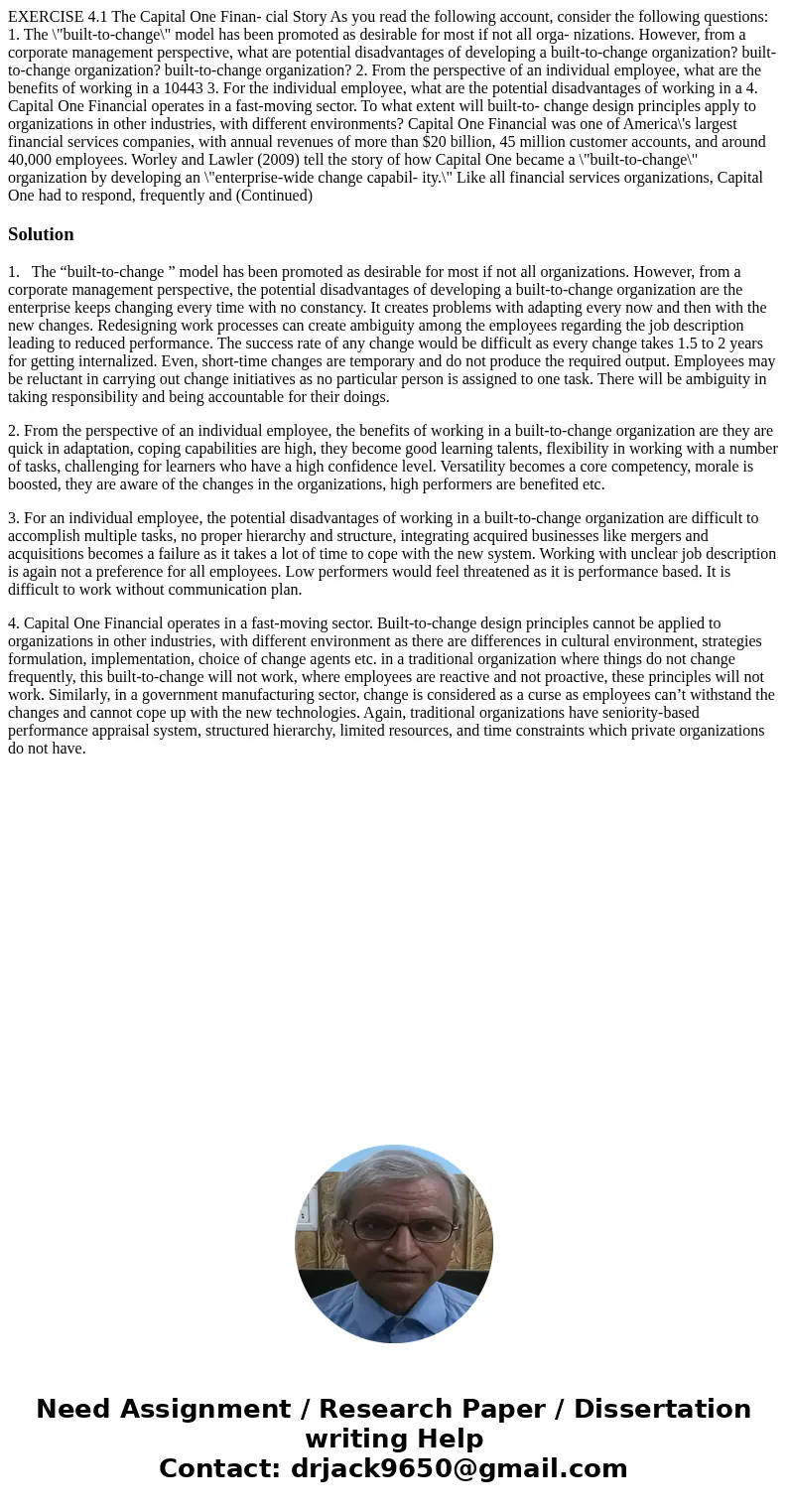EXERCISE 41 The Capital One Finan cial Story As you read the
Solution
1. The “built-to-change ” model has been promoted as desirable for most if not all organizations. However, from a corporate management perspective, the potential disadvantages of developing a built-to-change organization are the enterprise keeps changing every time with no constancy. It creates problems with adapting every now and then with the new changes. Redesigning work processes can create ambiguity among the employees regarding the job description leading to reduced performance. The success rate of any change would be difficult as every change takes 1.5 to 2 years for getting internalized. Even, short-time changes are temporary and do not produce the required output. Employees may be reluctant in carrying out change initiatives as no particular person is assigned to one task. There will be ambiguity in taking responsibility and being accountable for their doings.
2. From the perspective of an individual employee, the benefits of working in a built-to-change organization are they are quick in adaptation, coping capabilities are high, they become good learning talents, flexibility in working with a number of tasks, challenging for learners who have a high confidence level. Versatility becomes a core competency, morale is boosted, they are aware of the changes in the organizations, high performers are benefited etc.
3. For an individual employee, the potential disadvantages of working in a built-to-change organization are difficult to accomplish multiple tasks, no proper hierarchy and structure, integrating acquired businesses like mergers and acquisitions becomes a failure as it takes a lot of time to cope with the new system. Working with unclear job description is again not a preference for all employees. Low performers would feel threatened as it is performance based. It is difficult to work without communication plan.
4. Capital One Financial operates in a fast-moving sector. Built-to-change design principles cannot be applied to organizations in other industries, with different environment as there are differences in cultural environment, strategies formulation, implementation, choice of change agents etc. in a traditional organization where things do not change frequently, this built-to-change will not work, where employees are reactive and not proactive, these principles will not work. Similarly, in a government manufacturing sector, change is considered as a curse as employees can’t withstand the changes and cannot cope up with the new technologies. Again, traditional organizations have seniority-based performance appraisal system, structured hierarchy, limited resources, and time constraints which private organizations do not have.

 Homework Sourse
Homework Sourse